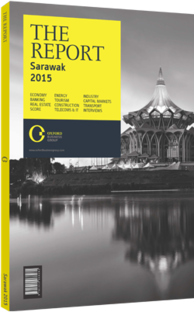New projects will transform Sarawak's energy sector
According to the “Malaysia Energy Statistics Handbook 2014”, Malaysia is endowed with 98.31trn standard cu feet (scf) of proven natural gas reserves, of which Sarawak accounts for around half, with 50.12trn scf, and neighbouring Sabah with 13.21trn scf. Offshore basins in the two eastern Malaysian states have become the focal point of exploration and production in recent years, as western Malaysia faces a steady decline in production from its maturing offshore oil and gas fields.
In 2013, as per figures from the International Energy Agency, Malaysia’s liquefied natural gas (LNG) exports were valued at RM59bn ($17.9bn) and responsible for 8.2% of national export earnings. And despite being the 14th-largest gas producing in the world, the country was ranked as the second-largest exporter of LNG after Qatar – a testament to the prominent role LNG makes up in Malaysia’s foreign earnings mix. Nearly all, around 99%, of the country’s liquefied exports are destined for East Asia, with Japan accounting for 59.7% of outbound shipments, South Korea for 16.8%, Taiwan 11.9% and China 10.7% in 2013. Most of what is exported overseas makes its way through the industrial port of Bintulu, located in central Sarawak, which is home to a major integrated LNG production complex.
INDUSTRIAL COMPLEX: Over the course of 2013, Malaysia’s LNG sales volume increased to 25.1m tonnes per annum (mtpa) from 23.7 mtpa in 2012, an improvement that the Malaysian Gas Association, in its 2014 annual review, attributes to “higher gas production from the domestic fields in Sarawak and higher plant reliability”. Spread over 276 ha, the Bintulu LNG complex, owned by Petroliam Nasional (Petronas), is one of the world’s largest single-site LNG facilities. Its eight trains and three processing plants provide a combined capacity of over 23 mtpa. The international oil giant is also currently developing a ninth LNG train, which is set to come on-line in 2016 and will offer bi-directional capabilities for both liquefaction and regasification processing. Once running, the ninth train should provide additional production capacity of around 3.6 mtpa.
MOVING OFFSHORE: Investments in added liquefaction capacity are being spurred on by the anticipation of new supply being channelled through Bintulu. Closer to home, several new fields offshore of Bintulu have been discovered that should see Sarawak retain its position as the country’s top producer of natural gas for some time. While further afield, the RM4.6bn ($1.4bn), 512-km Sabah-Sarawak Gas Pipeline that will transport gas from Sabah’s northern hydrocarbons fields in Kimanis to Bintulu is presently undergoing additional studies and construction work following a blast in January 2014 that damaged part of the line.
More than 30 years on from the LNG complex’s commissioning in 1983, Sarawak, along with Sabah, is set to be the location for another pioneering project, with the world’s first two floating liquefaction terminals scheduled to commence production by the end of 2015. The Petronas FLNG (PFLNG) 1, located at the Kanowit field 180 km offshore of Sarawak is designed with production capacity of 1.2 mtpa of LNG, while the second offshore terminal, PFLNG 2, is located at the Rotan field north-east of Sabah. The successful transitioning of the liquefaction process from land-based to offshore terminals will be considered a landmark technical achievement for Petronas.
IMPORT DEPENDENT: While Malaysia remains a significant exporter of LNG, rising demand alongside a depleting supply base from within western Malaysia has created the need for investment in domestic import and regasification terminals, the first of which took place in 2013. Most of the gas consumption, around 82%, according to Petronas, takes place in the industrialised and heavier populated peninsular part of the country, while most of the supply originates from eastern states, which are separated by sea on the island of Borneo. According to Petronas, once the Bintulu plant is operating at full capacity in 2016, Malaysia will no longer be reliant on LNG imports, as the 3.8-mtpa-capacity regasification terminal in the peninsular state of Melaka will by then be able receive local supplies.
You have reached the limit of premium articles you can view for free.
Choose from the options below to purchase print or digital editions of our Reports. You can also purchase a website subscription giving you unlimited access to all of our Reports online for 12 months.
If you have already purchased this Report or have a website subscription, please login to continue.

